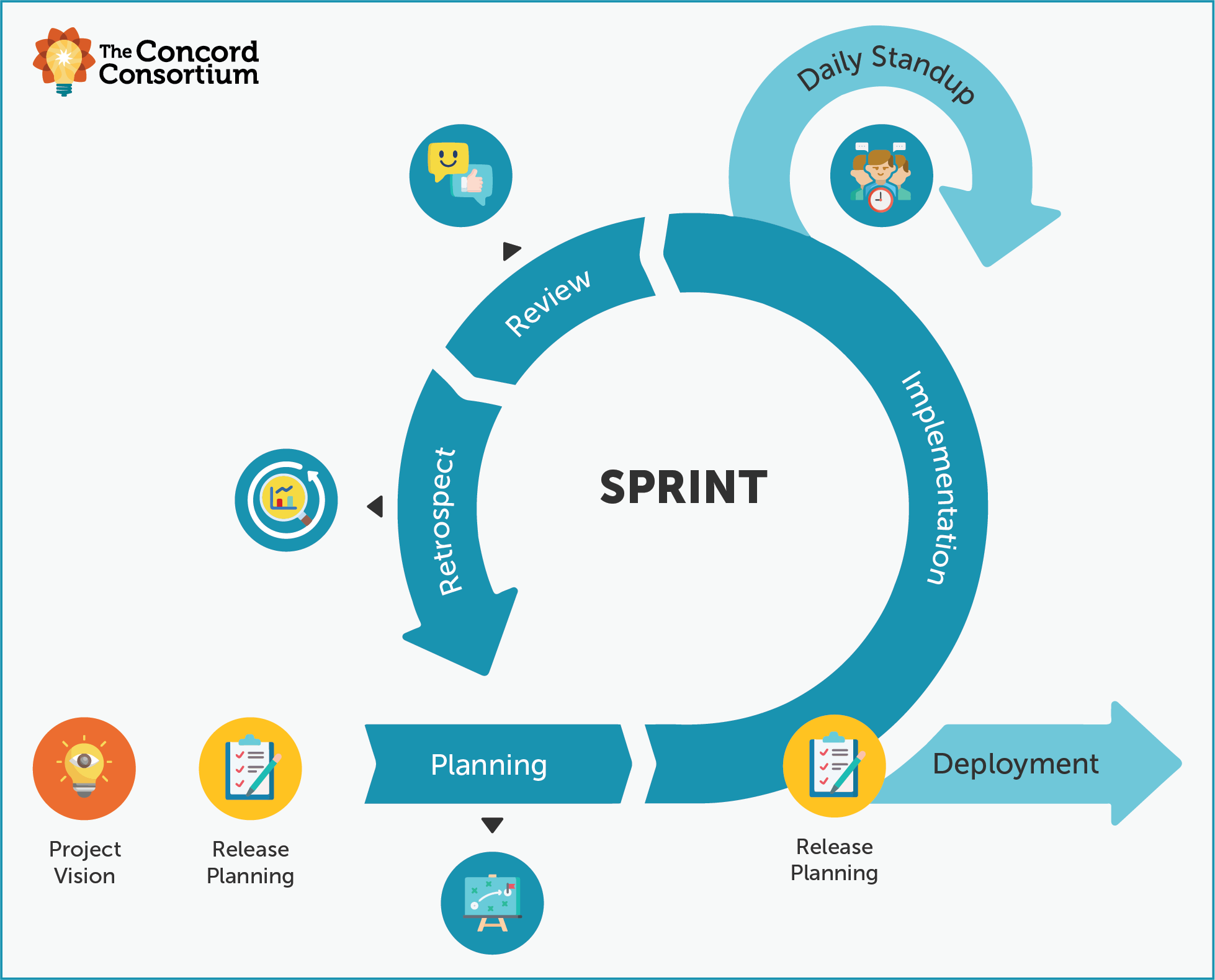As an organization dedicated to innovating and inspiring equitable, large-scale improvements in STEM teaching and learning through technology, we develop a lot of technology. I mean a lot.
Our Scrum approach to technology development is always evolving. We adapt to each research project, team, person, and circumstance to be as efficient and effective as possible. On our development team, we strive to uphold Scrum values and use Scrum events to communicate and promote transparency between project teams and the software developers implementing the features that are at the core of our research.
The Concord Consortium Scrum teams include a Scrum Master, software developers, QA engineers, a UI/UX designer, and a release engineer. Our “Product Owners” rotate in and out of these teams as their projects and products are being worked on. Every individual plays an important role and accepts responsibility for their tasks, understanding that they are a key player and when they succeed, the team succeeds. This team composition allows us to collaborate on all aspects of developing and releasing high-quality products for public use.
We follow a two-week sprint schedule that includes multiple Scrum processes and events.
- We communicate our progress and ask for help when blocked via daily standups (on Zoom and via Slack).
- We demonstrate new features and bug fixes and plan work for the upcoming sprint during sprint review and planning meetings.
- We estimate requested work in “grooming” meetings.
- We reflect on the sprint and our process in retrospectives.

Scrum is a cycle. We repeat the same process each sprint, but we adapt each time we begin a new cycle.
We learn from our challenges and from our successes so that we can continuously improve. With each new project, new feature, or new sprint, team members also have opportunities to learn a new piece of code or library, new strategies or processes, or new people with whom to collaborate and co-design. This learning is the key to Scrum.